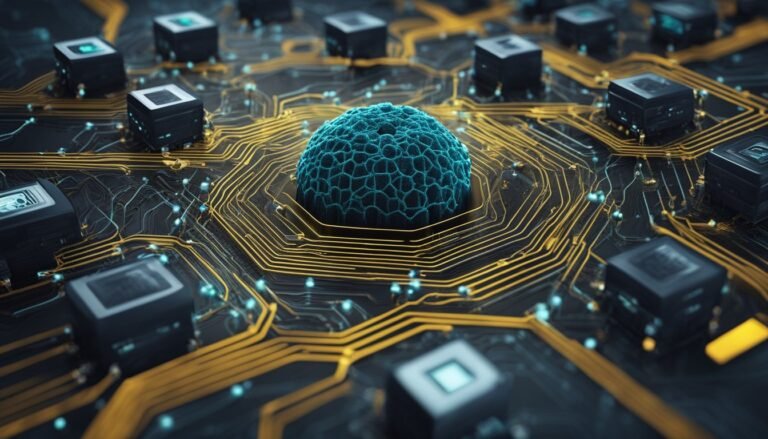Beta Character AI: Advancing Interactive Virtual Personalities

Beta Character AI offers users an exciting way to interact with neural language model chatbots that simulate human-like conversations. Developed by former Google engineers, this technology brings your imagination to life, creating characters you can chat with and explore new ideas. The platform is designed to make AI feel more personal and engaging for everyday use.

Users can create their own characters and engage with them in open-ended discussions, making Beta Character AI both fun and practical. From casual chats to more complex interactions, the possibilities are endless. The service also encourages creativity, allowing you to collaborate with AI to build unique conversations.
With its AI-driven technology, Beta Character AI has the potential to transform how we interact with machines. It offers a glimpse into a future where AI can assist in daily tasks, provide companionship, and enhance creativity.
Key Takeaways
- Beta Character AI enables human-like conversations with AI-created characters.
- The platform allows users to create and interact with their own custom characters.
- The technology behind Beta Character AI brings innovation to daily AI interactions.
Understanding Beta Character AI

Beta Character AI is a sophisticated tool used for creating lifelike AI chatbots. It leverages neural language models to develop naturalistic characters. These characters have various applications, including in gaming, e-commerce, and simulations.
Defining Beta Character AI
Beta Character AI is a platform that allows users to design and interact with AI-driven characters. It integrates advanced AI models like Neural Conversational and Large Language Models. These models analyze vast amounts of text to generate realistic responses. The primary appeal of Beta Character AI lies in its ability to maintain fluid conversations and mimic human-like behavior. This makes it an invaluable tool in various industries, especially where user engagement is critical.
Evolution and Advancements
The development of Beta Character AI has gone through several stages. Initially, simple rule-based systems dominated the landscape. As technology advanced, these were replaced by more sophisticated models powered by Machine Learning. The inclusion of neural language models marked a significant leap forward. These models can learn from extensive datasets, allowing for more natural and contextually relevant interactions. The platform is also continually updated to leverage the latest advancements in AI research.
Applying Beta Character AI in Gaming and Simulations
In gaming, Beta Character AI enhances user experience by creating smarter and more interactive NPCs (Non-Player Characters). This allows for more engaging and dynamic gameplay. The AI can adapt to player actions, making each game session unique. Similarly, in simulations, Beta Character AI can be used for training and educational purposes, offering realistic scenarios and interactions. The ability to create customized characters means that applications in this field are virtually limitless.
AI and Cybersecurity

AI plays a crucial role in strengthening digital infrastructure by detecting threats and vulnerabilities in real-time. However, the integration of AI-driven cybersecurity solutions presents several challenges that need to be addressed.
Roles of AI in Securing Digital Infrastructure
Artificial Intelligence is essential for cybersecurity. It helps detect and respond to cyber threats promptly. Machine learning algorithms can analyze vast amounts of data to identify unusual patterns, which indicate potential security breaches. This speeds up threat detection and minimizes damage.
AI can automate repetitive security tasks, freeing up human experts for more complex issues. It also supports predictive analytics to forecast future threats. AI tools, like intrusion detection systems and automated response protocols, are vital for keeping networks and data safe.
Overall, the use of AI makes cybersecurity more efficient and effective. By continuously learning from data, AI systems become better at identifying new types of threats.
Challenges in AI-Driven Cybersecurity
Implementing AI in cybersecurity isn’t without challenges. One major issue is the potential for false positives, where benign actions are flagged as threats. This can overwhelm security teams and reduce effectiveness.
Another concern is the security of the AI systems themselves. Hackers can target these systems to manipulate or disable them. Ensuring that AI systems are secure is critical to maintaining overall cybersecurity.
AI systems also require vast amounts of data to function effectively. This raises privacy concerns, as sensitive information might be exposed or misused. Finally, the high cost of implementing AI solutions can be a barrier for smaller organizations.
In summary, while AI has the potential to transform cybersecurity, it is essential to address these challenges to fully realize its benefits.
Innovations in Threat Detection
As cyber threats evolve, AI-driven threat detection mechanisms have become vital. These innovations not only enhance the efficiency of identifying threats but also introduce new approaches to cybersecurity.
AI-Driven Threat Detection Mechanisms
AI-driven threat detection uses machine learning and deep learning algorithms to identify and neutralize threats. These technologies can analyze vast amounts of data to find patterns and anomalies that traditional methods might miss.
For example, Rapid7 has introduced AI-powered capabilities that help teams detect unknown threats faster without adding excess noise. These systems can monitor network traffic in real-time and adapt to evolving threat landscapes. This leads to faster response times and more effective threat mitigation.
Case Studies: Successes in Machine Learning Threat Identification
Machine learning has shown remarkable success in threat identification. For instance, AI-powered threat detection is not just limited to predefined rules; it leverages advanced AI technologies to ensure more accurate detections.
A comprehensive guide on AI-powered threat detection explains how these systems streamline detection and response processes. Real-world implementations have demonstrated enhanced ability to predict and thwart cyber attacks, showing significant reductions in false positives and quicker incident response times.
By analyzing user behavior and network traffic patterns continuously, these systems can detect threats before they cause serious damage, making them an indispensable tool in modern cybersecurity.






